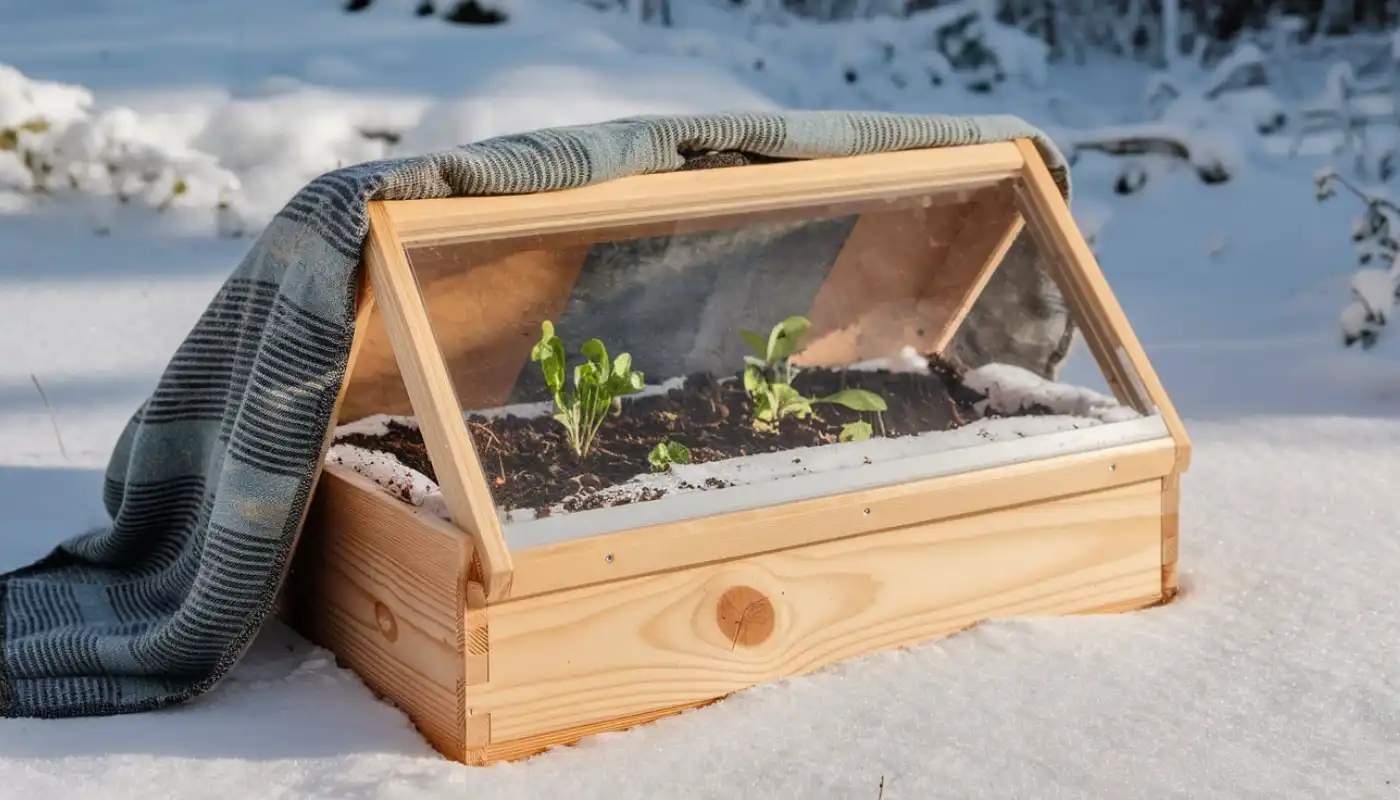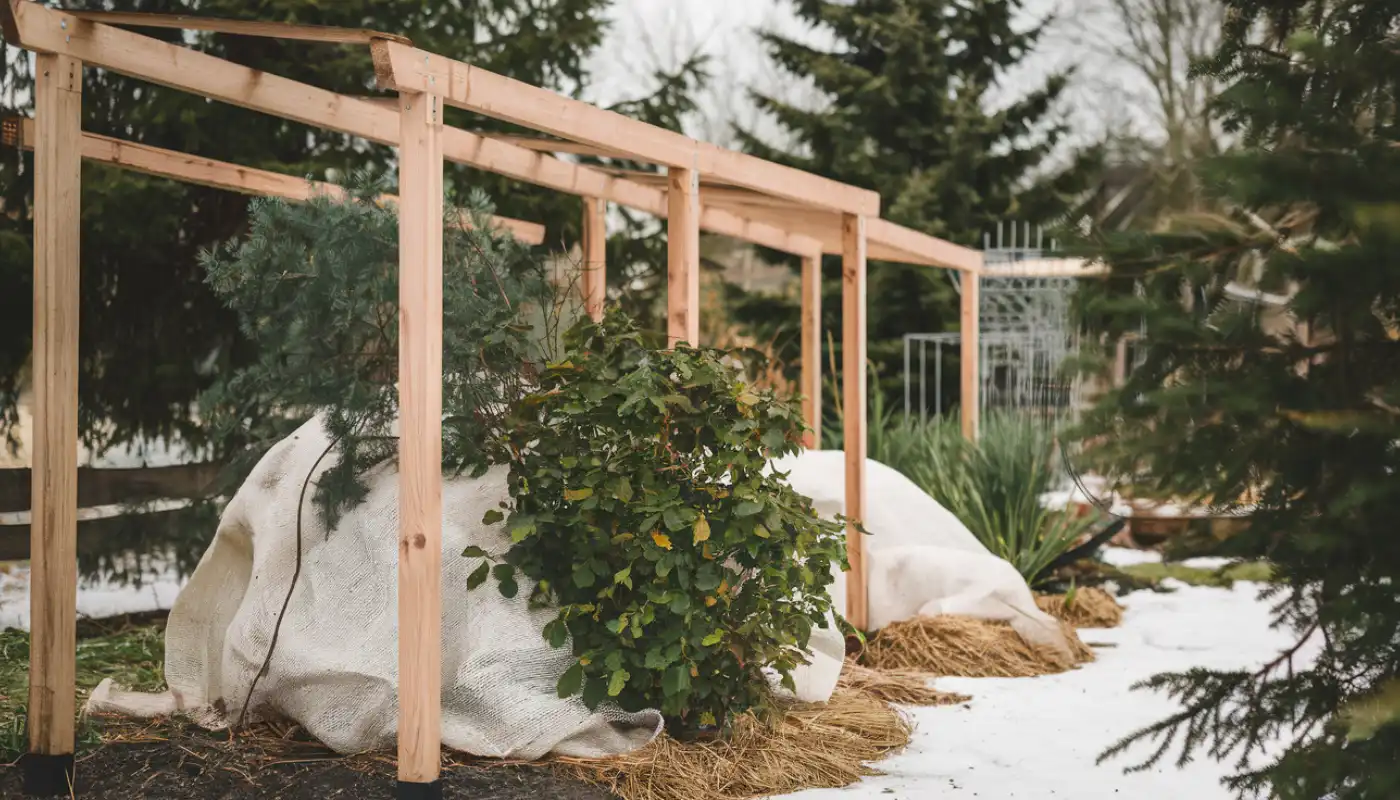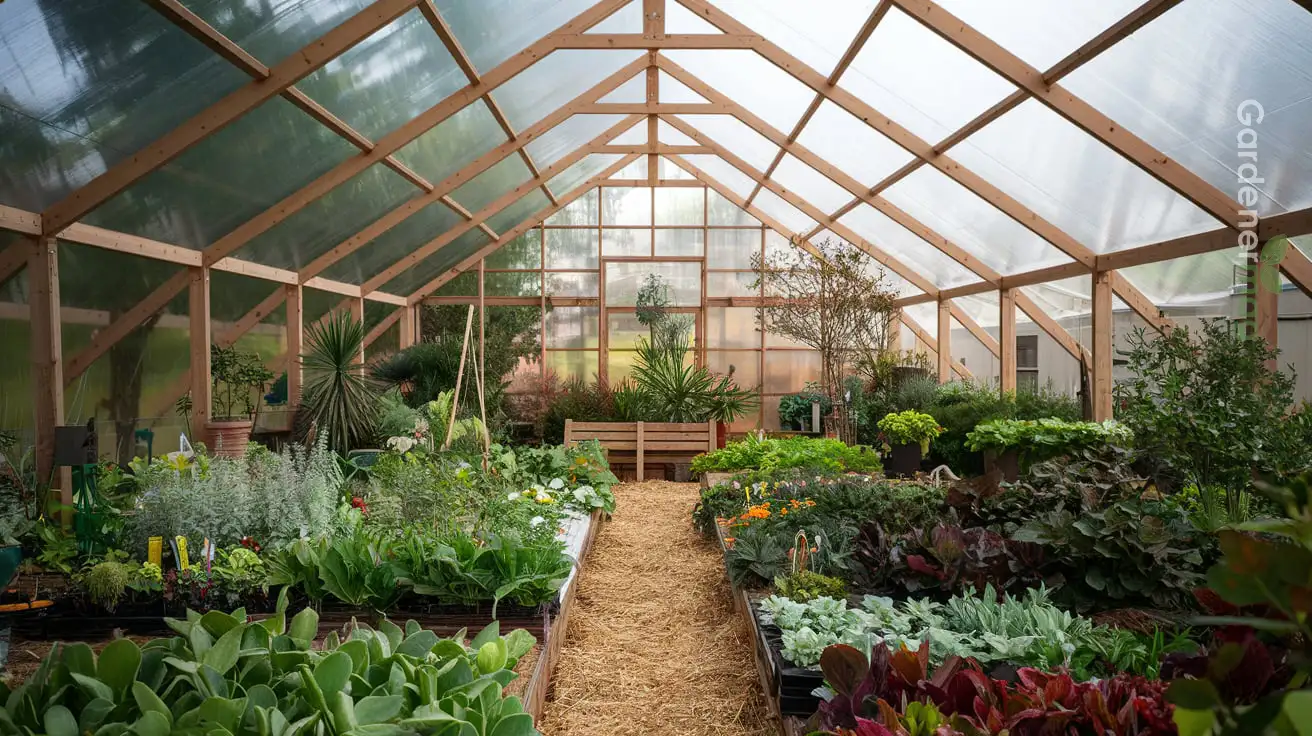Winter is coming, and the weather will soon start to turn colder, possibly dropping below freezing temperatures.
While preparing yourself for the winter against the dip in temperature, your plants and garden should not be left forgotten.
Protecting your plants in winter is very important because it allows you to continue harvesting and enjoying your plants when spring comes.
How do you then protect your plants in winter from frost and freeze to prevent winter damage? We’ve got you covered. This guide will show you how to plan and protect your plants in winter from frost and freeze. Let’s dive in.
5 Tips On How To Protect Plants In Winter

You know winter weather is erratic and unpredictable, but protecting your plants will ensure that you will still have a beautiful garden when spring comes.
Here are tips for gardeners on how to protect your garden plants from winter’s freezing temperatures and prevent winter damage.
Bring Plants Indoors

The best option to protect your plants from winter cold, especially if you practice container gardening, is to bring them indoors, if possible.
Bringing your potted plants indoors is also the easiest and cheapest way to protect those plants from the freezing temperatures. You can bring the plants into a porch, heated room, garage, or any other protected warm structure.
This way, your plants can enjoy the indoor warmth, which is sufficient to minimize winter damage.
However, if you practice in-ground gardening or have your plants on raised garden beds, try any of the options below:
Provide A Permanent Cover

If your plants cannot be easily moved indoors, then you can leave them outdoors but protect them with a permanent cover.
Of course, the best cover is glass. It is not only eco-friendly but helps to trap heat better. So, it is ideal if you can construct a permanent glass greenhouse or a cold frame with a glass cover over the plants.
Remember to open the cover in the morning.
Provide A Temporary Cover

If you don’t want a permanent structure, you can consider using cloches or a pop-up greenhouse to cover plants, both are good at retaining heat too,
Pop-up greenhouses are tents that act as a shelter over a few plants. Cloches are similar to mini greenhouses and are suitable for small, individual plants. They are made of glass, but you can make yours from big plastic bottles, just cut the bottom off.
Ensure that you remove the cloches over the plants in the morning. Also, open up the sides of the tent during the day so that air can circulate.
Other potential coverings include fleece, sheets, frost fabric, blankets, tarps, towels, or row covers (polytunnels). These coverings can effectively trap radiant heat to keep the plants from freezing and prevent frost from forming on the leaves.
To raise the coverings so that they don’t touch the plants, you can use posts, stakes, hoops, PVC pipes, or any other structures.
You can also use a large cardboard box as a cover for smaller, tender plants.
Cut out the bottom of the box and place it over the plant. Fill the empty spaces with dry leaves before covering the top of the box. Cover the box with plastic or nylon wrap to waterproof it.
Your plant should stay warm in the box. Don’t forget to remove the coverings in the morning when temperatures get above freezing.
Add A Layer Of Mulch

Another way to protect your plants in winter is by adding a layer of mulch to the plants’ base.
Mulch not only helps to retain moisture but also to retain heat and moderate temperature changes in the soil. It acts as a natural blanket to protect the pants from the disruptive freeze-thaw cycles.
To mulch your plant, add a three- to five-inch layer of mulch immediately after the first hard freeze. Be careful to keep the mulch dry and away from the plant roots to prevent damage to the plant.
You can either purchase wood mulch or use any lightweight material like pine straw or chopped leaves.
Overwinter Your Plant

Overwintering involves protecting your plant to keep it alive through the winter period when normal survival outdoors may be difficult.
You can overwinter your plants by potting them and bringing them indoors or dropping the root into a shallow glass of water up to the base of the stem and putting it on a windowsill.
Important note: You may not need to protect your emerging spring bulbs, such as tulips and daffodils, and some perennials like bleeding heart, daylily, catmint, and columbine, except lemongrass.
Emerging spring bulbs and perennials can tolerate cold temperatures in the upper 20s or low 30s °F such that these temperature ranges would cause little or no damage to early emerging perennials and spring blooming bulbs.
Covering alone may no longer be effective at preventing cold damage for some plants once temperatures drop below 28°F. You may need to combine more methods to effectively protect your plants, especially when the freezing temperatures are prolonged.
The best way to protect your vegetable garden against winter cold is to harvest all vegetables in your garden before the first hard freeze.
Conclusion
Cold winter weather can damage your plants, but by following the tips explained above, you can ensure that your plants thrive, even beyond the coldest months.
Frequently Asked Questions (FAQs)
The best way to protect your plants against the winter cold is by bringing them indoors if they are potted. However, if it’s not possible to get your plants indoors, try using cloches or cold frames, mulching, or overwintering.
You can protect your potted plants by bringing them indoors and putting them in a cool, bright location. If there are no rooms indoors, move the potted plants to a sheltered area or cover them with a suitable covering.
No, water your plants less in winter. During winter, plants are less active and require less water. However, don’t let the soil dry out completely.






